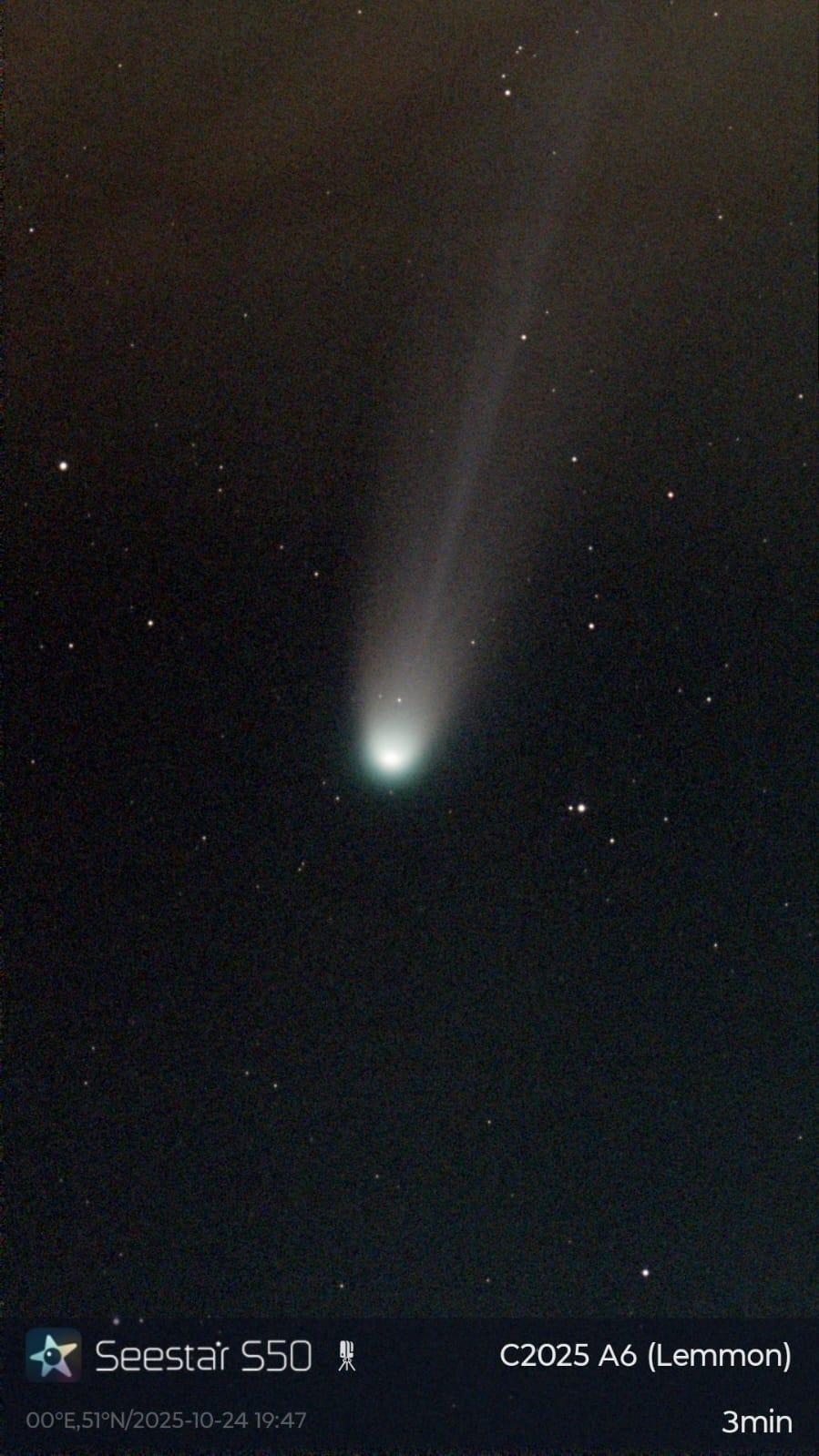Comets are usually named after their discoverer(s) family name, although with science increasingly being the result of large team efforts, the name of the team or project can be more appropriate so is often used.
Comet C/2025 K1 (Atlas)
Here is member George Buckberry’s latest image of Comet C/2025 K1 (ATLAS) taken on his Dwarf3 smart scope on the 26th November 2025. The image is made up of 12 stacked images at 15S exposure, Gain 60 and Astro filter. The first is the full image and the second is a crop of the first to show a zoomed in image of the Comet.
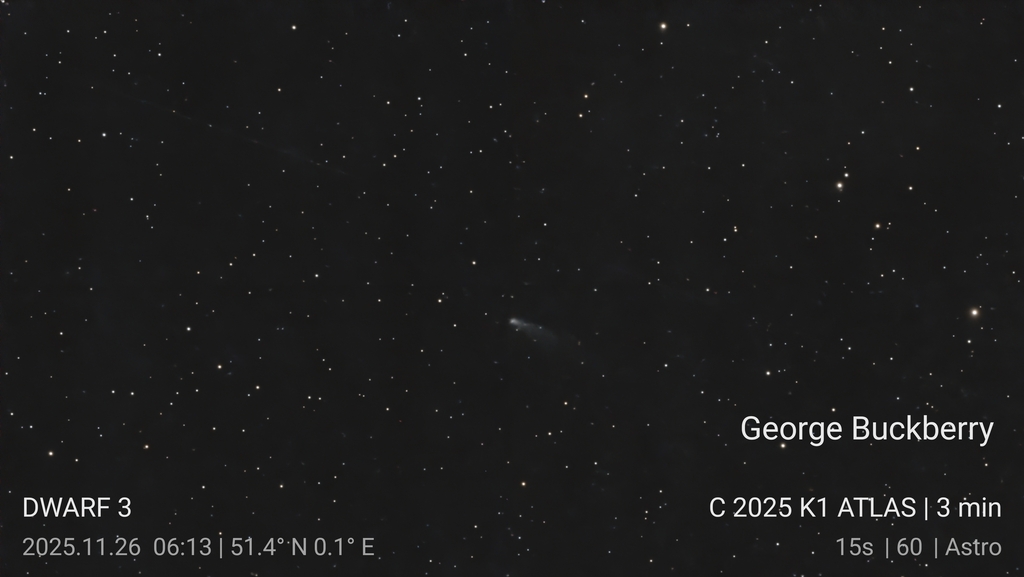
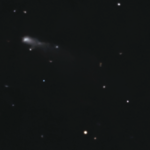
17th/18th November 2025 images by George Buckberry
The latest images from member George Buckberry. Taken using a Dwarf3 smart scope.
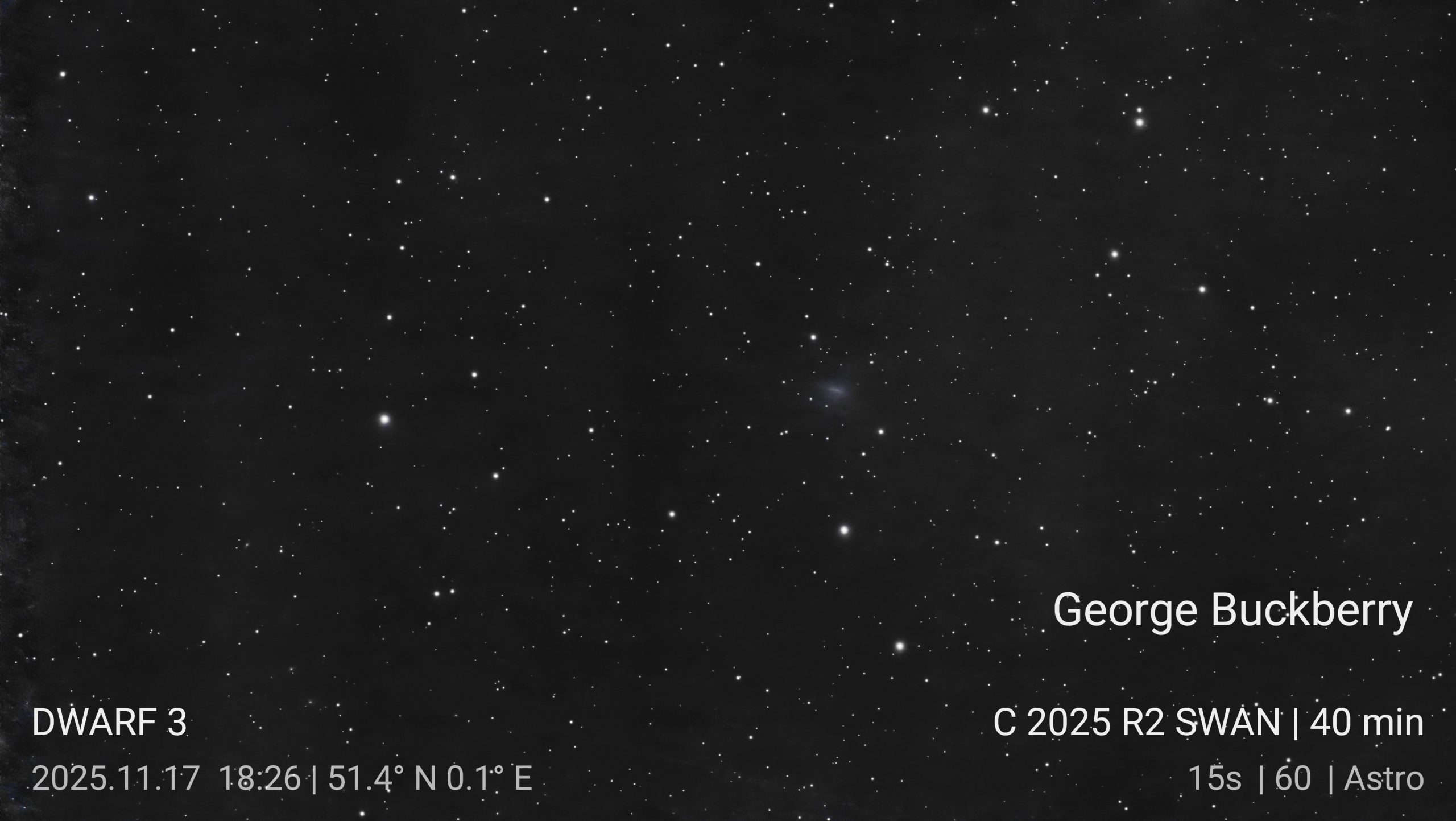
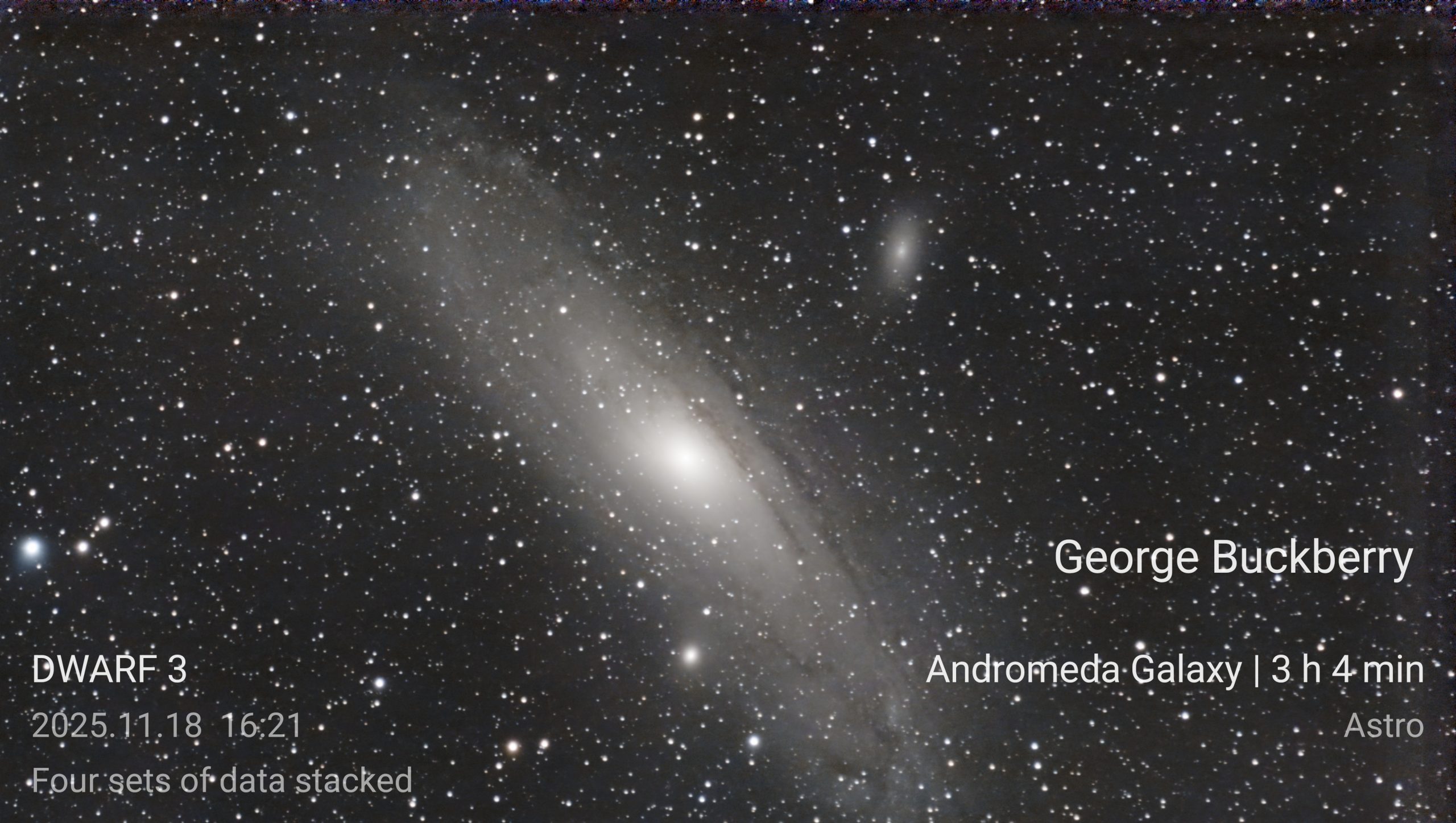
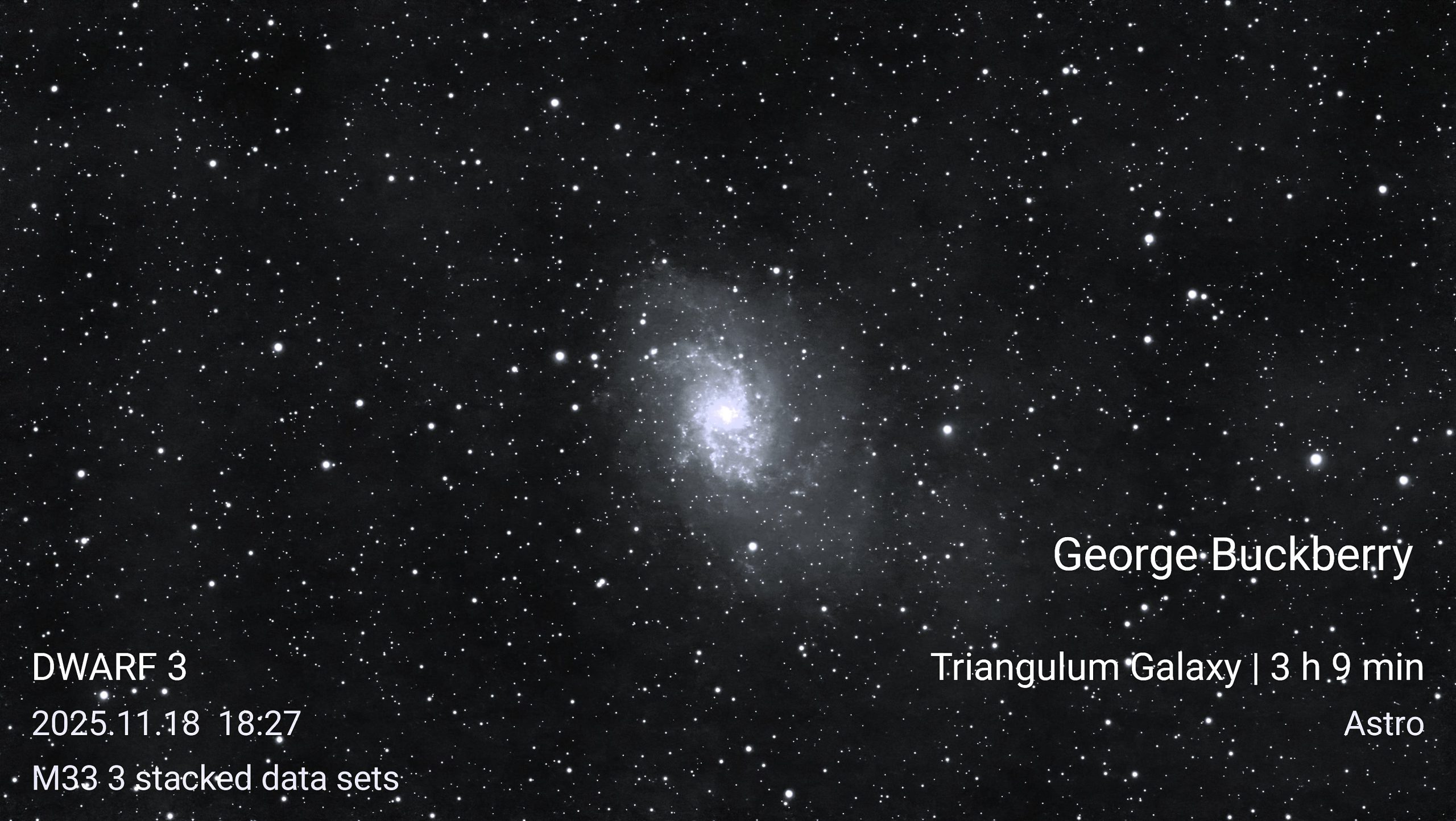
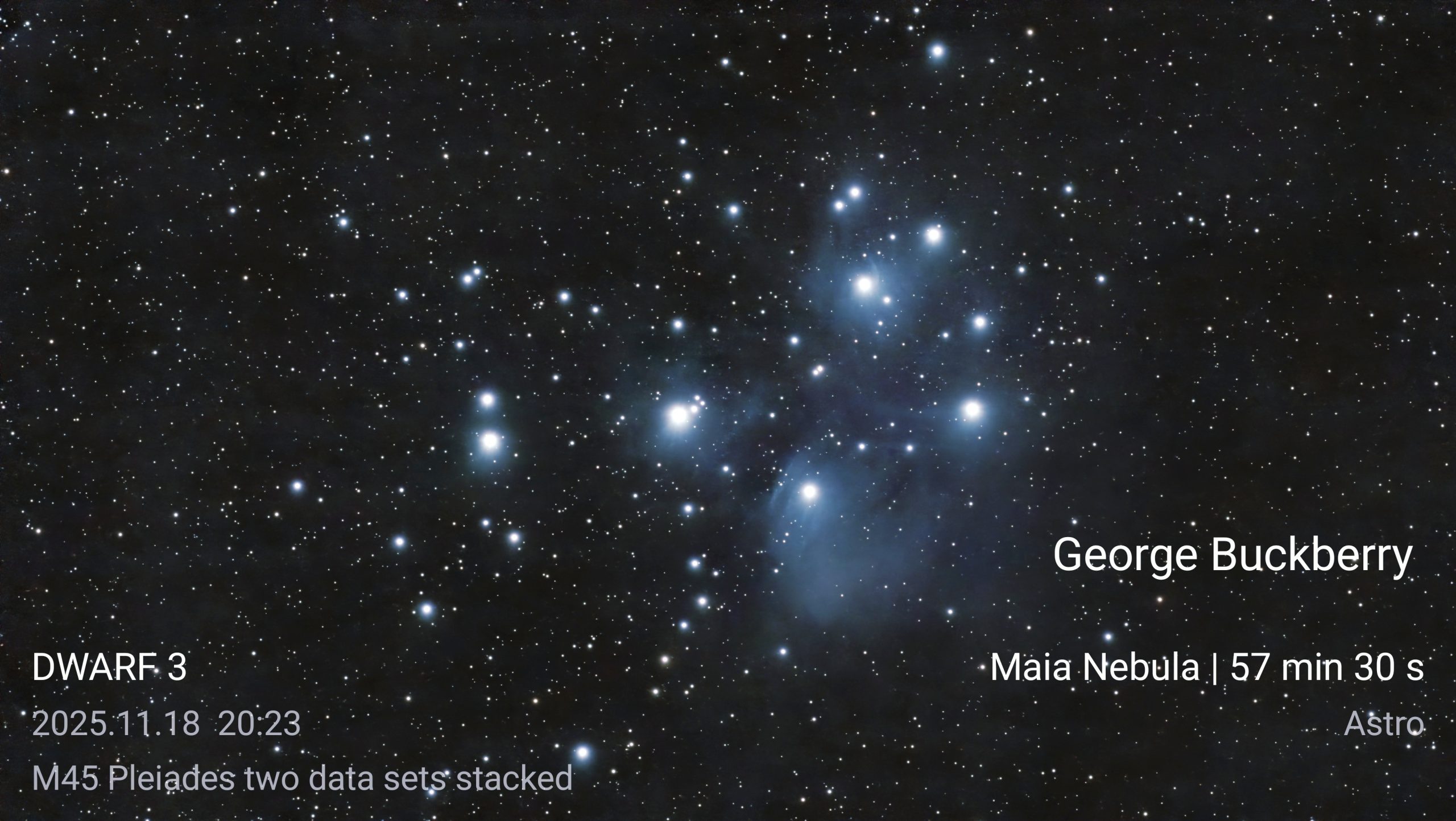
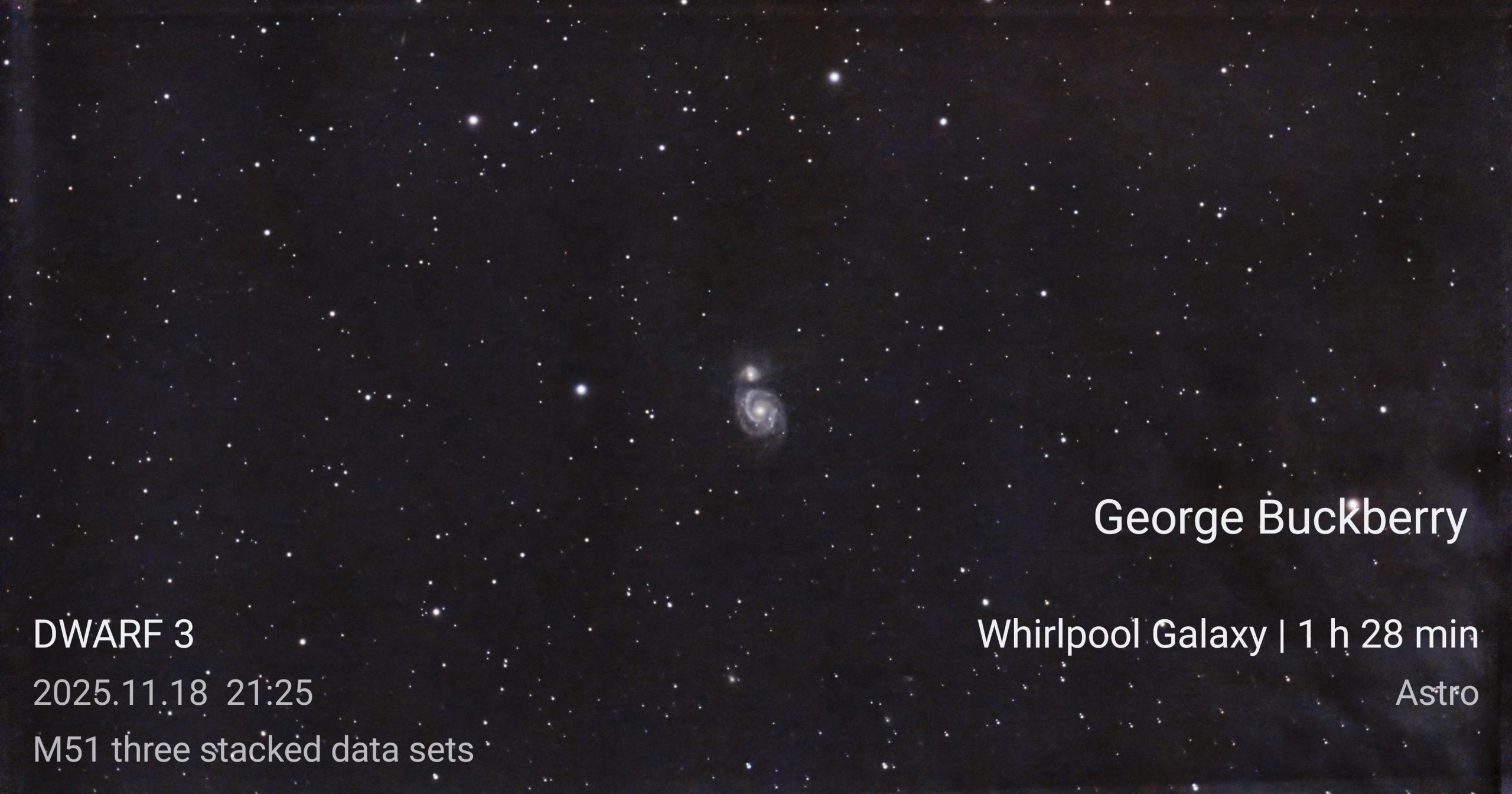
More great comet images by George Buckberry using his Dwarf3 smart scope
- Comet C/2025 R2 SWAN on the 28th October 2025.
- (60 stacked subs, Exp15S, Gain60 and Astro Auto with Watermark)
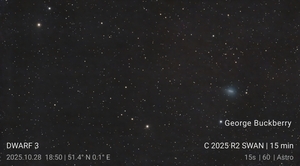
- The 2 images below are of Comet C/2025 R2 SWAN on the 25th & 28th Oct 2025 by George.
- Comet C/2025 R2 SWAN on the 25th Oct 2025.
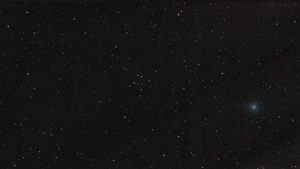
- Comet C/2025 R2 SWAN on the 28th Oct 2025.
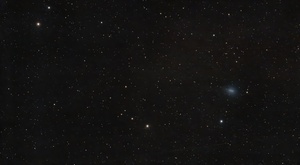
- This final image is of Comet C/2025 A6 Lemmon through clouds on the 28th October 2025.
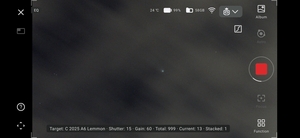
Comet C/2025 R2 (SWAN)
Two super images of Comet C/2025 R2 (SWAN) taken by members Jim Burchell and George Buckberry using their smart scopes.
”C/2025 R2 (SWAN), initially designated as SWAN25B, is a long period comet discovered on September 10, 2025 by Vladimir Bezugly on images captured by the Solar Wind Anisotropies (SWAN) camera of the Solar and Heliospheric Observer (SOHO). At the time of discovery the comet was just a few hours away from its perihelion transit, already as bright as magnitude 7.3 and with a well developed tail.” Ref:https://theskylive.com/c2025r2-info
Jim Burchell
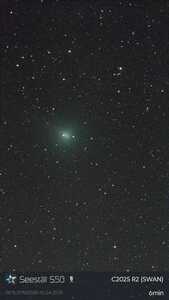
George Buckberry
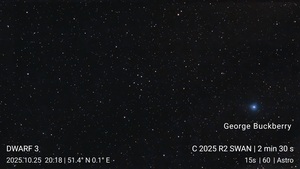
Comet C/2025 K1 ATLAS by Jim Burchell
Member Jim Burchell managed to capture the Comet C/2025 K1 Atlas on the 24th October 2025 in Virgo. C/2025 K1 (ATLAS) was discovered in May 2025 by the Asteroid Terrestrial-impact Last Alert System (ATLAS).
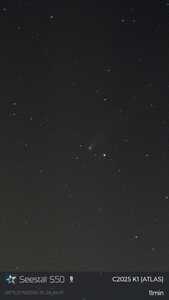
The latest Comet C/2025 A6 Lemmon images
On the 24th & 25th October 2025 several CMHASD members took the opportunity to image Comet C/2025 A6 Lemmon whilst there was a break in the clouds or thin cloud. Below are their superb images.
George Buckberry
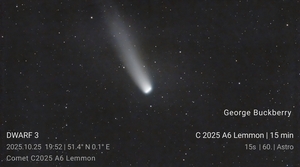
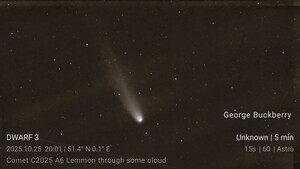
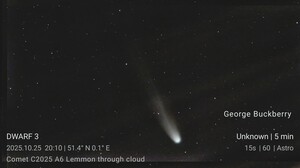
All 3 images taken using a Dwarf3 smart scope on the 25th October 2025.
Jim Burchell
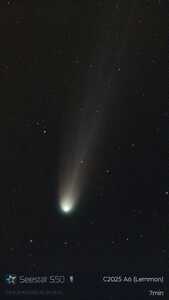
Taken on the 25th October 2025 using a Seestar S50 smart scope.
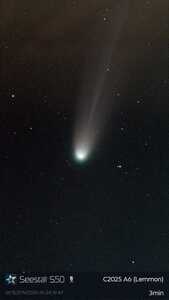
Taken on the 24th October 2025 using a Seestar S50 smart scope.
Mike Rushton
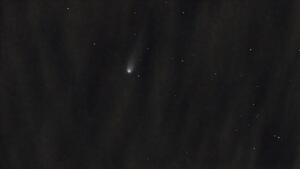
Taken on the 24th October using a Dwarf3 smart scope – looking through thin cloud.
Kevin Smith
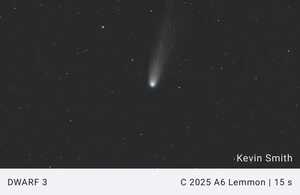
Taken on the 24th October 2025 using a Dwarf3 smart scope.
Honor Wheeler
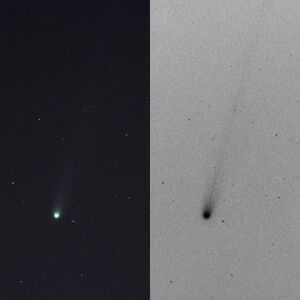
Colour image and an inverted image of the comet taken on the 24th October 2025 at 7.43pm.
Honor used a Canon M6II, Tamron 18-400mm lens and a Skywatcher Star Adventurer mount. The camera settings were ISO1600, F13 and 30sec.
Comet C/2025 A6 Lemmon – 21st Oct 2025
Comet Lemmon, or C/2025 A6 (Lemmon), was discovered by astronomers at the Mount Lemmon Survey, in Arizona, on the 3rd January 2025.
The comet is currently low in the northwestern sky after nightfall in the constellation of Boötes, not far from the bright star Arcturus.
On the 24th Oct it will still be above Arcturus but near the star Izar. (Note: The handle of the Big Dipper points towards Arcturus.), and in the coming days it will move into the constellation Serpens.
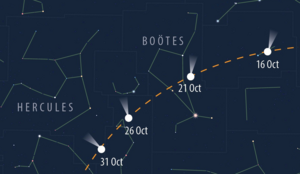
Sky chart showing the location of C/2025 A6 (Lemmon) at the end of October 2025. Credit: Astronomy Now magazine.
On the evening of the 21st Oct 2025, several CMHASD members managed to image the comet quickly through a gap in the clouds or with a thin veil of cloud.
CMHASD member George Buckberry captured the comet at 7:40pm using his Dwarf3 smart scope. His fantastic image below is made up of only 3 stacked images at 15S, gain 60 and Astro filter. Then run through Stellar Studio and no other processing.
The Water mark also shows NGC 5641 which was a little further West at the time George took the images of the comet.
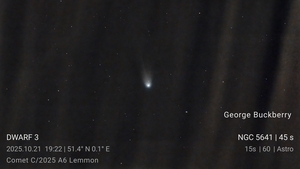
Kevin Smith captured the comet also using a Dwarf3 smart scope on the 21st Oct around the same time as George. His fantastic images are below.
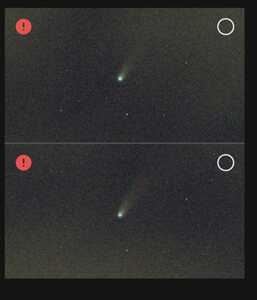
Honor Wheeler captured the comet at 7.19pm using a Canon M6II, Tamron 18-400mm, set at ISO3200, 3″ and F6.3. Her superb image is below.
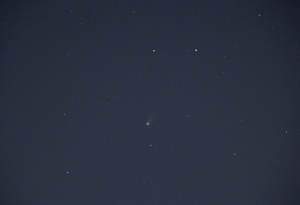
Finally member Jim Burchell captured the comet a little bit later on the 21st Oct at 20:19 BST. Jim used a Pentax KP set at F5.6, 20sec, 135 mm and iso 800 on a Skywatcher star adventure. His super image is below.
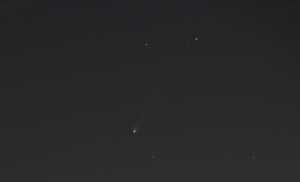
Comet C/2023 A3 Tsuchinshan Atlas by Jim Burchell – Oct 2024






Timelapse video of Comet C/2023 A3 Tsuchinshan-Atlas by Honor Wheeler
A superb timelapse video created by Honor Wheeler of Comet C/2023 A3 Tsuchinshan – Atlas on the 12th Oct 2024.
Comet C2023 A3 Tsuchinshan-ATLAS by Honor Wheeler – 12th Oct 2024

Four members of CMHASD; John Archer, Gary Hunt, Jo Southgate and Honor Wheeler met up at Top Dartford Road at around 18:30 to see if they could spot comet C2023 A3 Tsuchinshan – ATLAS on the 12th Oct 2024. The rain cleared just in time and the sky was clearing of cloud as they set up. It took about 25 minutes looking but in the end they spotted the comet nucleus with a pair of 8×42 binoculars in the orange glow of the sunset i.e. in the Western sky approx 10 to 20° above the horizon 🙂
Below are some fantastic images of the comet taken by Honor. These images were also the 1st ones of the comet to be put on the British Astronomical Association (BAA) website – well done Honor!



Other Images
Sun | Comets | Mercury | Venus | Atmospheric Optics | Meteors | Auroa and NLC | Moon | Minor Planets | Mars | Jupiter | Saturn | Uranus | Neptune | Messier | Caldwell | All Deep Sky | Conjunctions | Transits | Solar Eclipse | Lunar Eclipse | Wide Field |ISS & Space Junk | Exo-Planets
All images are copyright. Permission must be sought to from the image owner to the use of any of these images.

